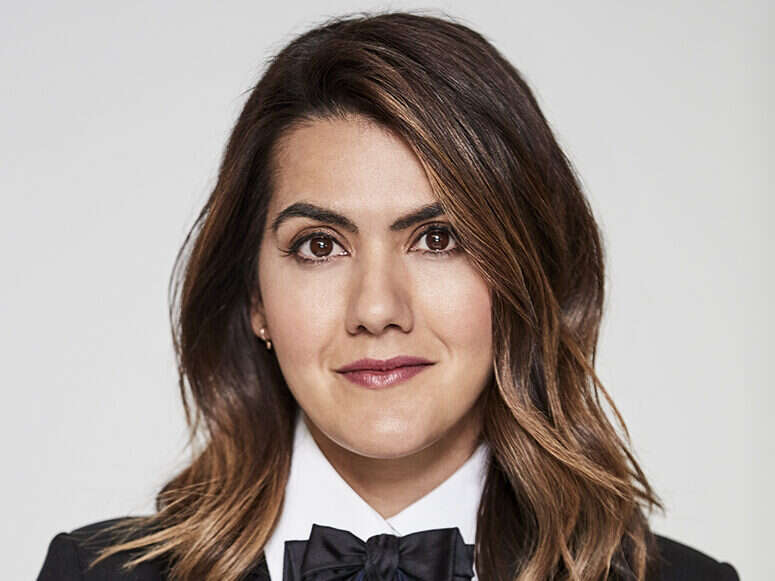
Farrah Storr, who will spearhead the recruitment of new UK writers for Substack, has said she would have “killed for” the relationship a newsletter has with its audience while she was editing magazines.
Former Cosmopolitan and Elle UK editor-in-chief Storr started at the newsletter platform in November as its first head of UK writer partnerships.
She told Press Gazette she left magazines for newsletters because “I felt that I’d done everything that I set out to do. And there wasn’t really any other place for me to go.
“I’d followed Substack’s progress for a couple of years. I probably spent more on subscriptions to Substack and Substackers in the last couple years than I was spending on magazines.
“Even though the medium is completely different, essentially what they are doing is the same thing… I fell in love with magazines because they celebrated wonderful, largely long-form journalism. And that’s what Substack celebrates.”
Storr’s appointment is part of a “concerted push to bring more UK-based writers to Substack”, according to the platform’s co-founder Hamish McKenzie. The company has said the UK is its second largest market for both readers and writers.
Storr said she had a long and “very varied” list of names in mind to approach who work across different genres.
She said she wanted writers with “very strong independent voices”, many of whom cover “quite niche subjects”.
And although she will go after some “big names” with “large followings”, she said “what I’m really interested in is bringing a really broad cross section to the platform”.
Storr also pointed to her background in women’s magazines, saying: “My background is women, what makes women tick… there will be a big push for more female writers on the platform as well, but not to the exclusivity of men.”
Vox’s Recode reported in March that journalist Matt Yglesias had received $250,000 from Substack as part of his sign-up deal. New York Magazine art critic Jerry Saltz claimed on Instagram in July to have received, and rejected, the same offer. The platform has also given money to lesser-known names, announcing in June that it had awarded a total of £1m to 12 local journalism projects in the UK, US, Australia, Brazil, Nigeria, Romania and Taiwan.
Storr declined to tell Press Gazette if she had similar sums to play with, but said that the Substack payment model, whereby subscribers directly fund the writers they enjoy, was one of the things that attracted her to the company.
“I have to say that’s, ideologically, one of the things that I’ve struggled with a lot over the last ten years,” she said. “When we hear these tales of writers writing for free, I’ve never agreed with it.”
[Read more: How to make money on Substack: Newsletter platforms charted]
Is there a particular kind of writing she feels does well on Substack?
“It’s not actually what you’re writing about,” she responded. “It’s not the content. It’s those who are passionate about what they write about and therefore they probably write more frequently.
“If you write what you’re passionate about, you’re going to engage with your audience on a more regular basis. And because that means you’re going to be popping into your audience’s inbox more frequently, the intimacy between audience and writer becomes stronger. And that’s something I would have killed for when I was editing a magazine.”
Storr said successful Substackers give something to their audience about twice a week: “Whether that’s about leaf blowing, or whether that’s about the news doesn’t really matter.”
She conceded however that currently the site’s biggest names tend to be political writers. In the UK these include former Boris Johnson adviser Dominic Cummings and former Guardian journalist Suzanne Moore.
[Read more: Suzanne Moore says she resigned from Guardian after editors removed views on trans issues from comment pieces]
The sixth most popular Substacker in the politics category is Alex Berenson, the former New York Times writer who was banned from Twitter for violating its rules around Covid-19 misinformation.
How does Storr feel about the prospect of Substack becoming a refuge for the deplatformed?
“What you have to remember is anybody can go on Substack — Substack doesn’t seek out writers based on their opinions, or their beliefs,” she said.
“It’s up to the readers to decide what they choose to read. We support freedom of the press – even for those who we don’t necessarily agree with.
“Of course this goes without saying – if it’s hate speech, or inciting violence, then of course there’s a problem. But we’re on the side of upholding press freedom over personal comfort… I think that’s important. You decide what you feel comfortable with, and if you feel uncomfortable, then you don’t subscribe.”
Picture: Substack
Email pged@pressgazette.co.uk to point out mistakes, provide story tips or send in a letter for publication on our "Letters Page" blog
